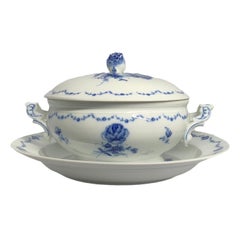Furstenberg Lottine
20th Century German Rococo Decorative Bowls
Porcelain
People Also Browsed
Antique Early 19th Century English Georgian Balustrades and Fixtures
Wrought Iron
Antique Early 1800s English Georgian Beds and Bed Frames
Upholstery, Mahogany
Vintage 1920s Dinner Plates
Porcelain
Vintage 1910s English Neoclassical Dinner Plates
Porcelain
Early 20th Century Dinner Plates
Vintage 1920s Persian Tabriz Persian Rugs
Wool
Antique 1810s American American Colonial Beds and Bed Frames
Brass, Iron
Antique 19th Century French Napoleon III Crystal Serveware
Crystal, Ormolu
Mid-20th Century English Japonisme Tea Sets
Porcelain
Vintage 1950s Danish Scandinavian Modern Vases
Porcelain
Vintage 1950s Danish Scandinavian Modern Vases
Porcelain
Antique 18th Century and Earlier English Georgian Wall Mirrors
Gold Leaf
Antique Early 1800s English Georgian Sterling Silver
Sterling Silver
Antique 1820s French Porcelain
Porcelain
Antique 1880s Danish Art Nouveau Porcelain
Early 20th Century British Neoclassical Dinner Plates
Porcelain
A Close Look at Rococo Furniture
Rococo was an aesthetic movement in the fine and decorative arts in the 18th century that found its inspiration in nature and fostered an overall lightness and delicacy of form, construction and ornament in interior design. Rococo furniture, while greatly influenced by trends in Italy and Germany, is often called Louis XV style — the movement having reached its best expression during that sybaritic French king’s reign.
The term “rococo” is thought to be a portmanteau of the French words rocaille and coquilles — “rock” and “shells” — organic motifs frequently used in architecture and design of the style.
When it comes to authentic Rococo furniture's characteristics, it is above all sensuous and social. The furniture of earlier eras in Europe had been heavy in every sense; the Rococo period saw the appearance of light-framed upholstered armchairs, side chairs and occasional tables that could easily be moved to form conversational circles.
The signal detail of Rococo furniture design is the gently curved cabriole, or S-shaped chair-, table-, and cabinet-leg. It imitates the bend of a tree limb or a flower stem. In a further reference to nature, furnishings were often asymmetrical and painted white, or in soft, pastel shades. Rococo has become a timeless style, and as the furniture pieces presented on 1stDibs demonstrate, its playful, sculptural forms can provide visual excitement to contemporary, clean-lined spaces.
Finding the Right Decorative-bowls for You
Vintage, new and antique decorative bowls have been an important part of the home for centuries, although their uses have changed over the years. While functional examples of bowls date back thousands of years, ornamental design on bowls as well as baskets likewise has a rich heritage, from the carved bowls of the Maya to the plaited river-cane baskets of Indigenous people in the Southeast United States.
Decorative objects continue to bring character and art into a space. An outdoor gathering can become a sophisticated garden party with the addition of a few natural-fiber baskets to hold blankets or fruit on a table, as demonstrated in the interior design work by firms such as Alexander Design.
Elsewhere, Richard Haining’s reclaimed wood vases and bowls can express eco-consciousness. Sculptural handmade cast concrete bowls like those made by the Oakland, California–based UMÉ Studio introduce compelling textures to your dining room table.
Minimalist ceramic decorative bowls of varying colors can evoke a feeling of human connectedness through their association with handmade craftsmanship, such as in the rooms envisioned by South African interior designer Kelly Hoppen. And you can elevate any space with ceramic bowls that match the color scheme.
Browse the 1stDibs collection of decorative bowls and explore the endless options available.
